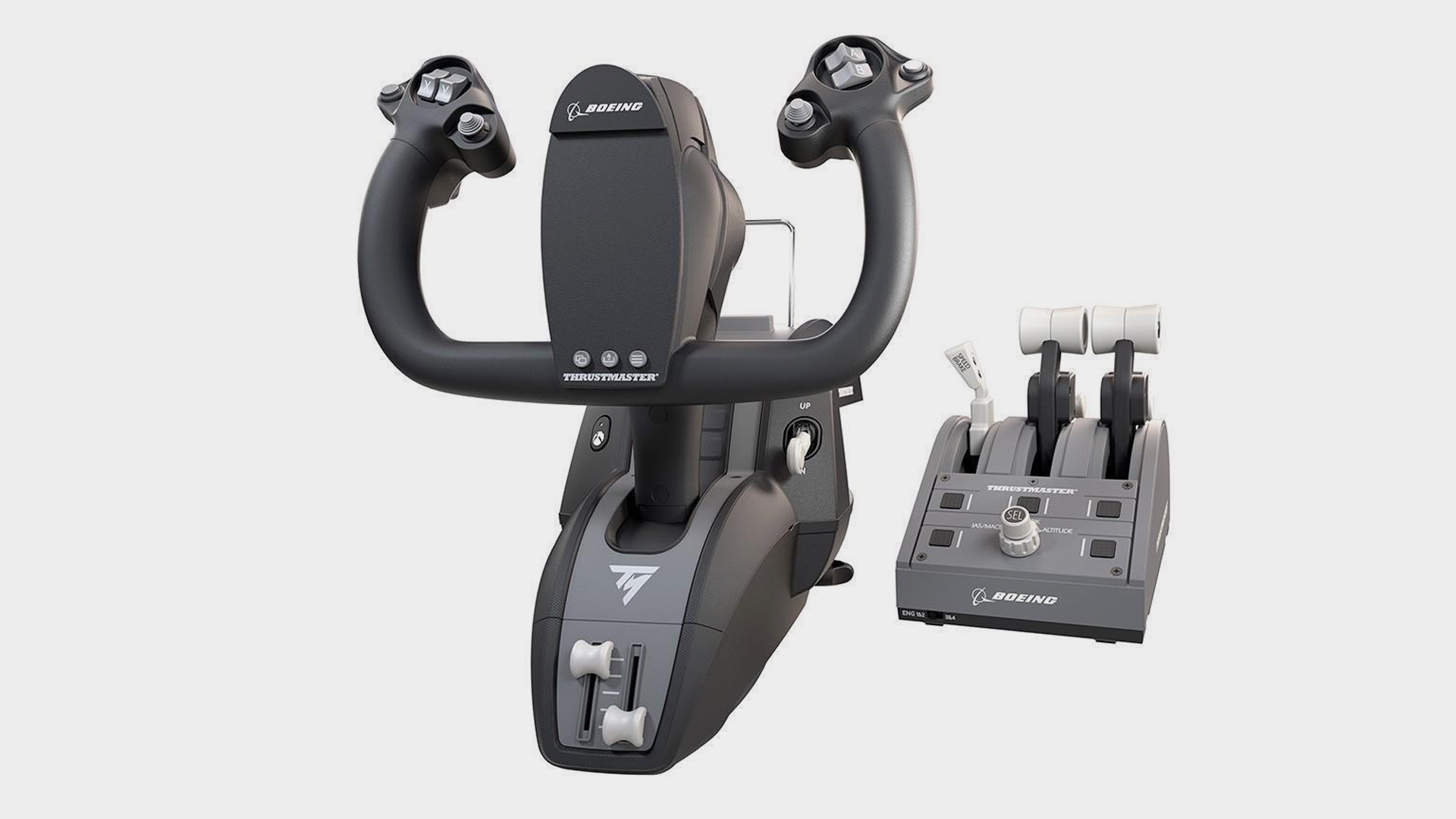Our Verdict
With Boeing's seal of approval the TCA Yoke Pack Boeing Edition is a masterful piece of kit, covering all the bases and topping it off with buttery-smooth action, but you'll pay a premium for the full-on piloting experience.
For
- Beautifully smooth action
- Ergonomic, sturdy and professional
- Comprehensive but not overcomplicated
- Swappable levers make it ambidextrous
Against
- Reverse thrust levers are buttons, not on an axis
- Costs as much as a go in a real airplane
PC Gamer's got your back
Thrustmaster has gone the extra nautical mile with the TCA Yoke Pack, having had the thing officially licensed by Boeing. It may not be officially FAA certified, but it's no wonder Boeing got involved. Not only is it the spitting image of an airliner yoke—bar some minor details and perhaps the size—it also handles like a dream(liner). And while there are a few features that would have been appreciated for the asking price, it lives up to its reputation on so many levels.
Type: Yoke and throttle quadrant
Action buttons: 35
Hats: 2
Weight: 3.6kg (8lbs) yoke, 0.65kg (1.4lb) throttle
Launch price: $499 (£450)
Touting the same tilting, pendular movement you'd expect from a real Boeing aircraft, the yoke swings back and forth intuitively as you pitch up and down. It's a much more pleasant experience to the push-pull motion you'd find on the majority of yokes on the market, even at the higher end. It really makes a difference to the immersion—I can almost feel the g-force as I pull back on the control column.
And boy is it smooth; a butter smooth action that feels like I'm one with the plane, rather than feeling like I'm fighting against it.
The obvious drawback to choosing a yoke like this, is the lack of z-rotation you'd get with many of the best joysticks around, but this is easily circumvented with the use of the trigger buttons. That does mean you can't map your guns to the triggers, but the TCA yoke is designed more for long-haul flights, as opposed to games involving intense dogfight action. For space-bound games that require 3D movement, or terrestrial flyey-shootey games like Ace Combat 7, it's not the most fitting control solution.
There's hardly a thing about this yoke that feels out of place.
If you do want to map your rudders to the TCA yoke's triggers, it's important to note that there's no pressure sensitivity. That means it can be a little hit or miss if you haven't calibrated it right. Still, with some fiddling in your game of choice you may be able to gain greater control rather than causing an immediate 180° spin.
Other features on the yoke that really hit the mark are the right hand thumb hat. Being an analogue stick, you get more freedom for whatever you feel like mapping it to. On the lower part of the yoke, below the control column, there are two extra axes for added flexibility.
While we're getting into the many buttons and triggers, the accompanying thruster quadrant is more than adequate in that regard. You've got three levers, five unassuming buttons, and an MCP switch for changing modes, complete with integrated selection dial that doubles as an extra button. It's features like this that keep the outward look uncomplicated, while still providing more than enough functionality to see you through.
There's no detent latch like you'd get on the throttle arm in a real aircraft, but the action for each one is smooth, and has a decent amount of feedback behind it. Each of the levers are modular, too, in that you can swap the knobs around as you will—a great feature for lefties—and there's even a dedicated knob marked 'flaps' and 'speed brake', depending on how you want to map them. Another button sits on the side of each of the main throttle knobs as well, for easy thumb access.
My main gripe is with the fact the reverse thrust levers on the back of two of the throttle arms don't work on an axis. While in theory these sound like a great additional feature, in Microsoft Flight Simulator at least, these pick up as button inputs and don't let you verify until they're unpressed. It causes some issues with mapping and just doesn't work the way you expect it to.
Mounting the yoke itself is as simple as slipping it over the edge of your desk and doing it up, no drilling necessary, and the throttle quadrant doesn't even require mounting at all if you don't feel like it, though the process is also pretty straightforward. What's great is no matter how close you mount the throttle quadrant, the yoke doesn't catch it. And while the yoke may sit a little low for some, the sunken design does make it feel more like a real cockpit.
Not only are there detailed instructions on how to set the whole thing up—with control mapping charts and diagrams—there's even a little instruction leaflet for adjusting the yoke tension with an included spring. That part does require a little faffing, but isn't too scary.
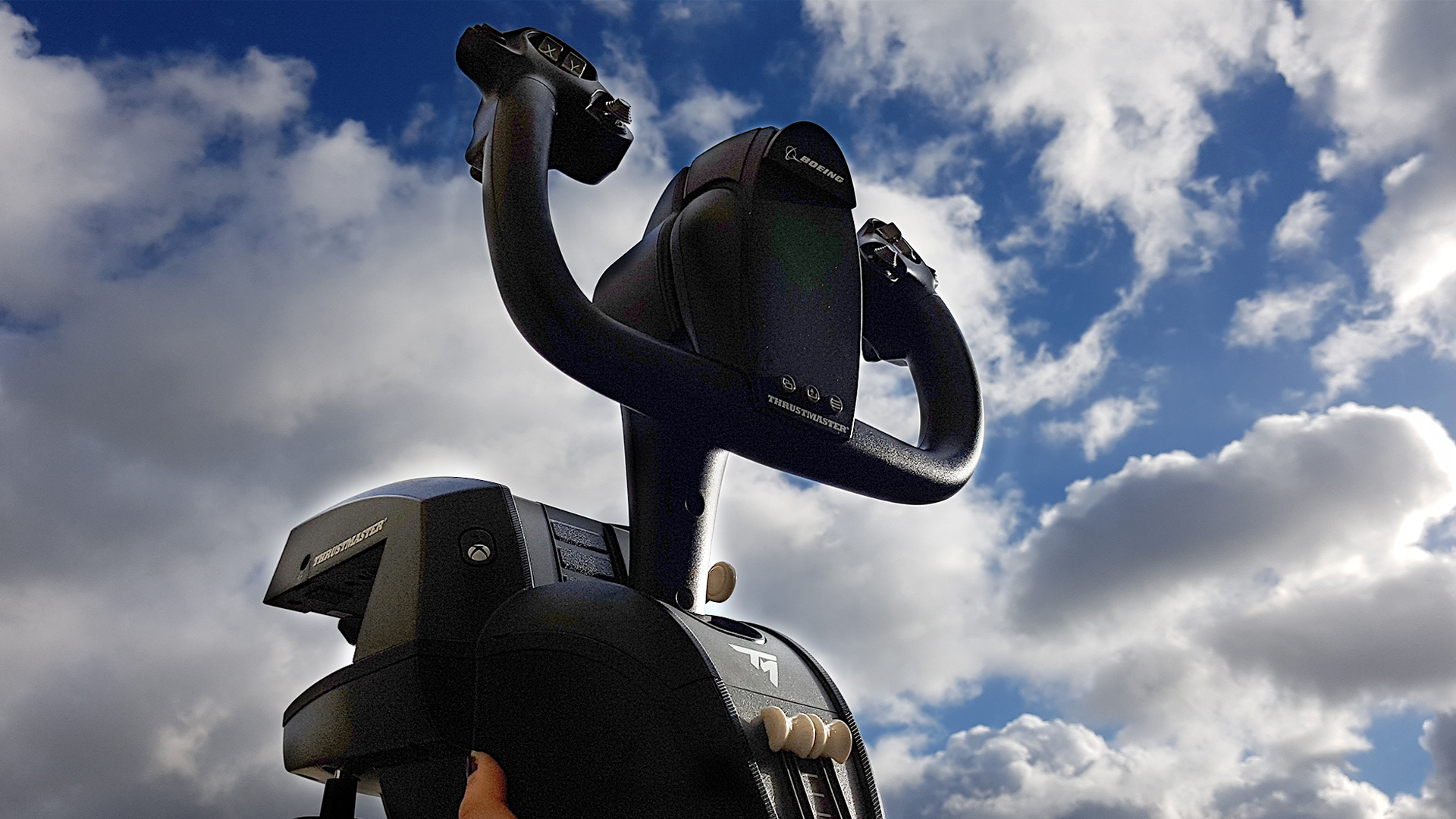
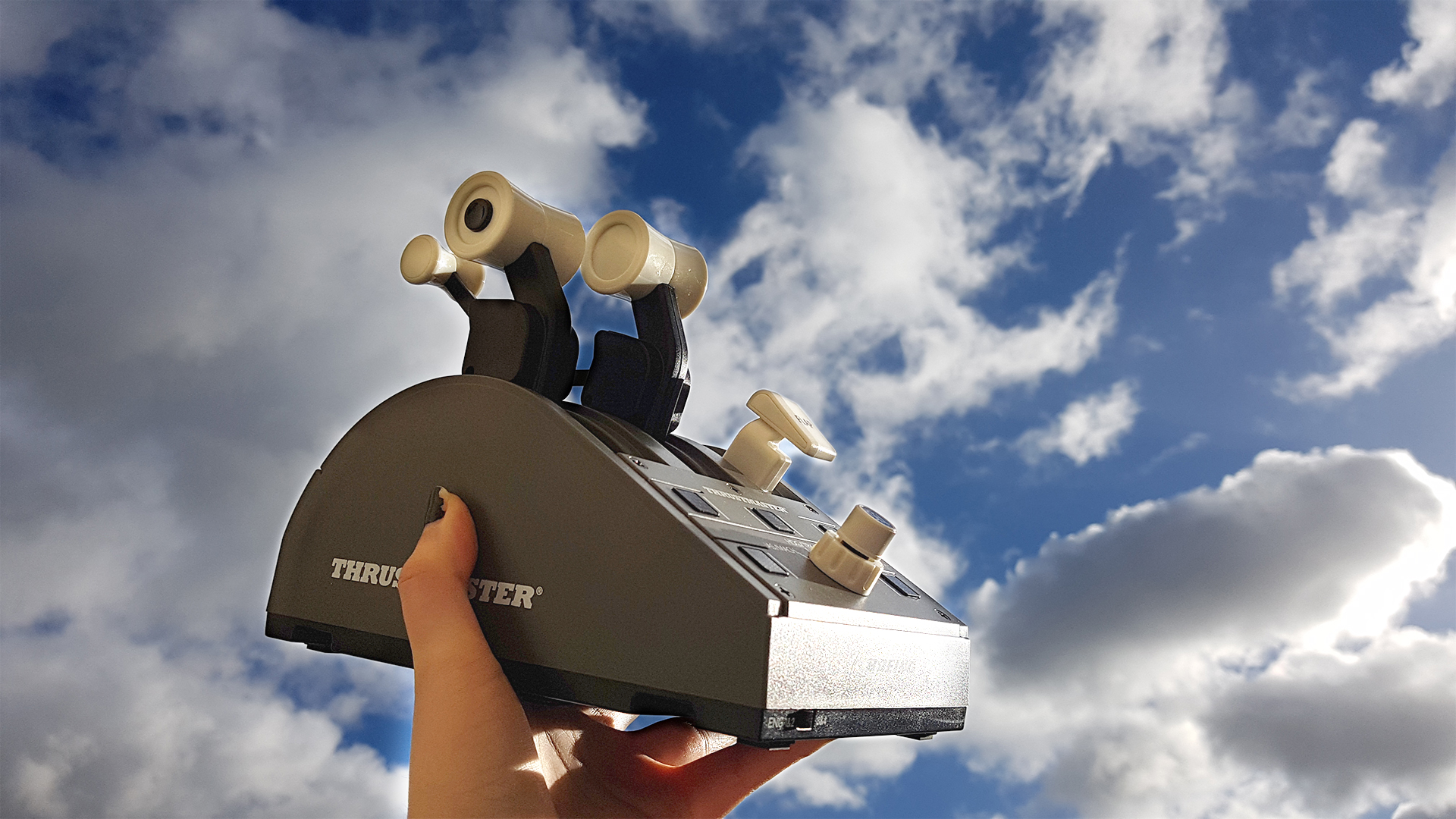
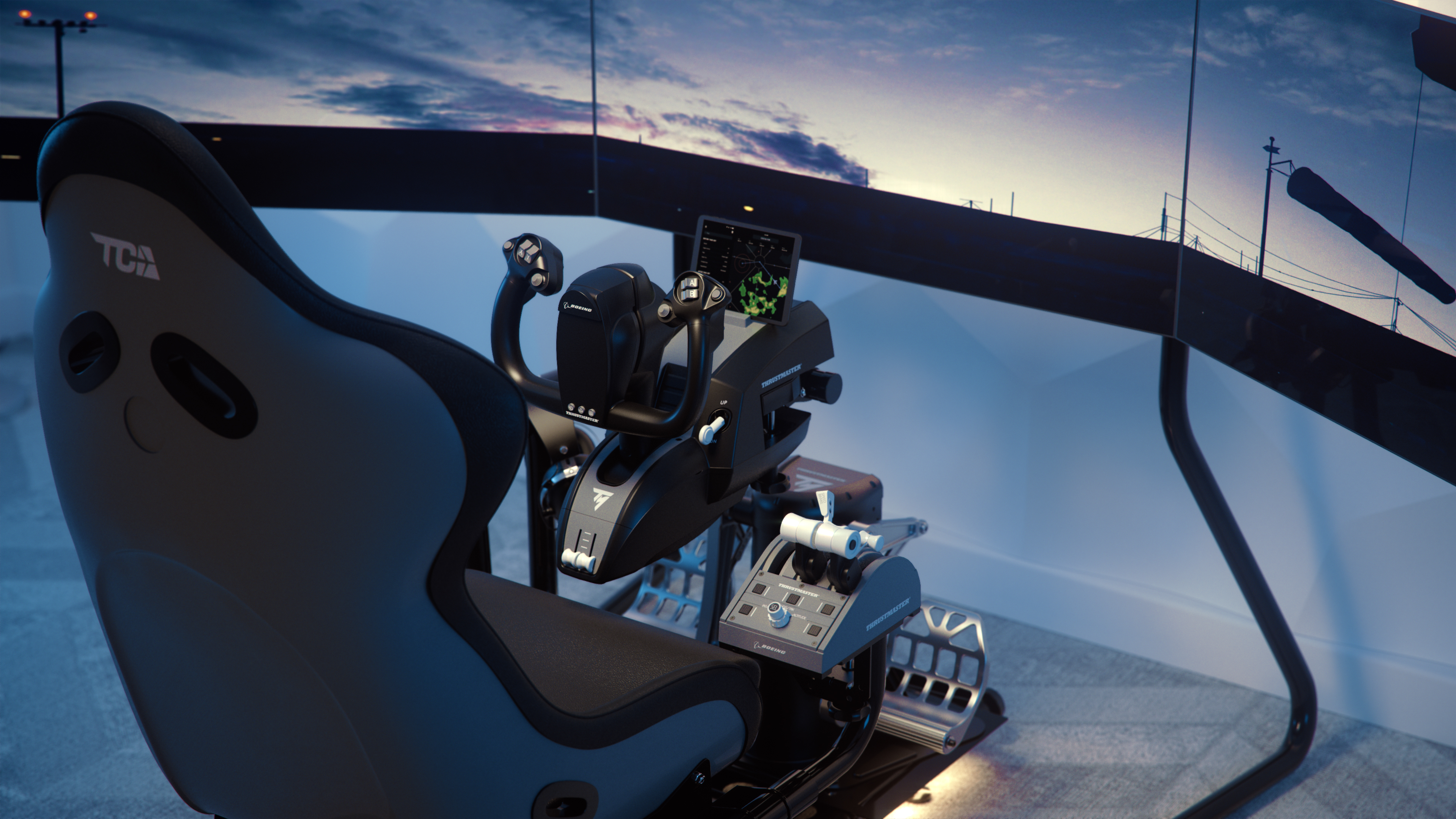
It's great to see cross compatibility with the Xbox Series X/S, although the Xbox branding does pull away from the authentic look a little. It's an easy thing to overlook, but it would be better if it was optional to have your switches marked X, Y, A and B.
None of that takes away from the professional, satisfying feel of the whole setup. Sure, some pressure sensitivity on the triggers would have been nice, and the oddities with the reverse thrust levers aren't the most intuitive, but otherwise there's hardly a thing about this yoke that feels out of place. Most actual pilots I've spotted reviewing this yoke are really impressed with how accurate the design is compared to the real deal.
Of course, you're paying a premium for the experience, but the Thrustmaster TCA Yoke Pack Boeing Edition is as close as a consumer-tier flight sim yoke comes to the proper piloting experience. And with build quality as exceptional as Thrustmaster is known for, it should last longer than a day's jaunt through the stratosphere.
With Boeing's seal of approval the TCA Yoke Pack Boeing Edition is a masterful piece of kit, covering all the bases and topping it off with buttery-smooth action, but you'll pay a premium for the full-on piloting experience.
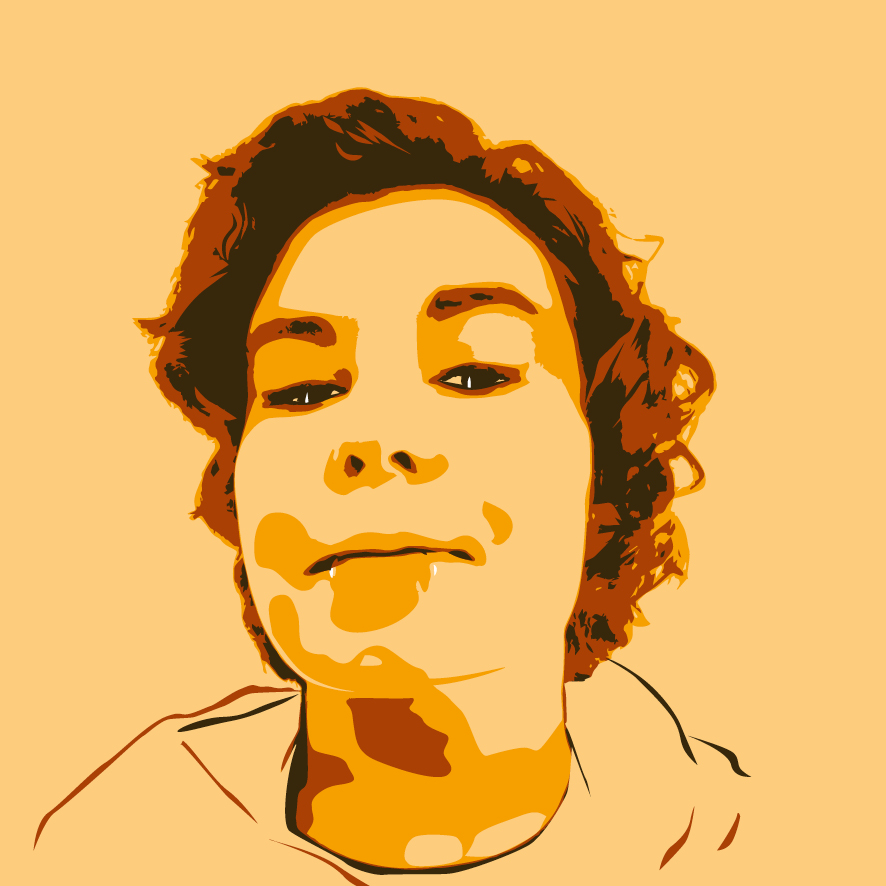
Screw sports, Katie would rather watch Intel, AMD and Nvidia go at it. Having been obsessed with computers and graphics for three long decades, she took Game Art and Design up to Masters level at uni, and has been rambling about games, tech and science—rather sarcastically—for four years since. She can be found admiring technological advancements, scrambling for scintillating Raspberry Pi projects, preaching cybersecurity awareness, sighing over semiconductors, and gawping at the latest GPU upgrades. Right now she's waiting patiently for her chance to upload her consciousness into the cloud.
